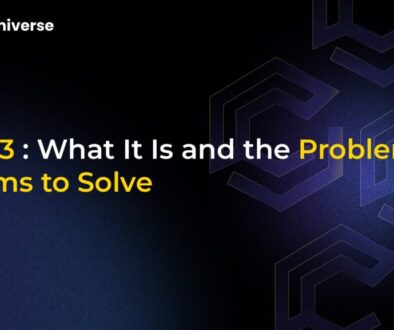Ethereum’s Pectra Upgrade: A Potential Catalyst for Market Momentum

Ethereum’s Next Leap: Understanding the Pectra Upgrade
While the broader crypto market has seen significant surges, Ethereum (ETH), the second-largest cryptocurrency, has sometimes appeared to lag behind its peers in the current bull cycle. However, the Ethereum network is far from static. A major upcoming upgrade, codenamed Pectra, is generating buzz and could be the catalyst needed to attract developers, traders, and institutional interest back to the ecosystem, potentially reigniting its market momentum.
Scheduled for mainnet launch around May 7, 2025, the Pectra upgrade represents a significant step forward for the Ethereum network. It’s not just a single change but a combination of two major updates: the Prague upgrade for the execution layer (handling transactions and smart contracts) and the Electra upgrade for the consensus layer (managing proof-of-stake validation). This combined hard fork aims to deliver substantial improvements across the board.
What are the Goals of Pectra?
Pectra is designed to address several key areas, enhancing the overall health and usability of the Ethereum network. The primary goals include:
- Enhanced Scalability: Optimizing transaction throughput and potentially lowering costs for users.
- Improved User Experience (UX): Making interacting with the Ethereum network smoother and more intuitive for everyday users.
- Increased Staking Efficiency: Streamlining operations for validators who secure the network and earn staking rewards.
By tackling these core aspects, Pectra aims to make Ethereum more robust, user-friendly, and attractive for both individual participants and large-scale institutions.
Key Changes Coming with Pectra: A Look at the EIPs
The Pectra upgrade bundles together numerous Ethereum Improvement Proposals (EIPs). While node operators and exchanges will need to update their software, regular users and smart contracts won’t need to take direct action. However, the features introduced will gradually roll out as wallets, decentralized applications (dApps), and Layer-2 scaling solutions adopt them. Here are some of the most impactful EIPs included:
EIP-7251: Boosting Validator Efficiency
One of the headline changes is EIP-7251, which proposes increasing the maximum effective balance for a single validator. Currently capped at 32 ETH, this limit could rise significantly, potentially as high as 2048 ETH.
- Impact: This greatly benefits large stakers (like exchanges or staking pools) by allowing them to consolidate their stakes. Instead of running numerous validators each with 32 ETH, they can manage fewer validators with larger balances. This reduces administrative overhead and simplifies operations.
EIP-7002: Empowering Stakers with Triggerable Withdrawals
EIP-7002 introduces execution-layer triggerable withdrawals. This might sound technical, but it’s a crucial improvement for staking security and flexibility.
- Impact: Currently, withdrawing staked ETH often relies on the validator operator initiating the process. EIP-7002 allows stakers (or smart contracts managing staked funds, like liquid staking protocols) to trigger withdrawals directly from the execution layer. This gives stakers more direct control over their assets and mitigates reliance on third-party operators for withdrawals.
Enhancing User Experience
Beyond staking, Pectra includes EIPs focused on improving the day-to-day user experience:
- EIP-3074: This proposal allows regular user wallets (Externally Owned Accounts or EOAs) to behave more like smart contracts. This unlocks powerful features like transaction batching (sending multiple transactions as one) and sponsored transactions, where someone else can pay the gas fees for a user.
- Fee Sponsorship: Related to EIP-3074 and other potential changes, the ability for transactions fees (gas) to be paid in tokens other than ETH, or sponsored by dApps, could significantly lower the barrier to entry for new users.
Pectra’s Potential Market Impact: Will ETH Regain Momentum?
The comprehensive nature of the Pectra upgrade holds significant potential to influence Ethereum’s market dynamics.
- Increased Demand: By making staking more efficient and attractive (especially for institutions via EIP-7251) and improving the general user experience, Pectra could drive increased demand for ETH for both staking and network usage.
- Institutional Appeal: Simplified staking operations and enhanced wallet functionalities make Ethereum a more appealing platform for large financial entities and institutional investors.
- Potential Supply Tightening: Easier and potentially more consolidated staking could lead to more ETH being locked up in staking contracts, potentially reducing the circulating supply available on the open market.
- Improved Narrative: Major upgrades often provide a strong narrative that can capture market attention. Pectra demonstrates Ethereum’s continued development and commitment to improvement, which could boost investor confidence.
If these factors align, the Pectra upgrade could indeed provide the necessary push for Ethereum to regain market momentum and potentially initiate a new uptrend.
Navigating the Challenges
Despite the optimism, major network upgrades are complex undertakings and come with inherent risks and challenges.
- Implementation Risk: Ensuring all EIPs are implemented correctly and securely across Ethereum’s diverse client software is paramount.
- Centralization Concerns: While EIP-7251 offers efficiency, some observers worry it might further advantage large, well-capitalized staking entities, potentially increasing centralization risks. Maintaining sufficient client, operator, and cloud diversity remains crucial for network health.
- Adoption Timeline: The real benefits of Pectra will only materialize as the ecosystem (wallets, dApps, L2s) integrates the new features, which may take time post-upgrade.
Conclusion: Paving the Way for Ethereum’s Future
The Pectra upgrade represents a crucial milestone in Ethereum’s ongoing evolution. By focusing on core areas like staking efficiency, user experience, and scalability foundations, it aims to make the network more powerful, accessible, and appealing to a broader range of users and institutions. While challenges exist and the full market impact may unfold gradually, Pectra provides a compelling narrative and tangible improvements that could very well serve as the catalyst Ethereum needs to build fresh momentum in the dynamic crypto landscape. The road ahead involves careful implementation and ecosystem adoption, but the potential rewards for the Ethereum network and its native currency, ETH, are substantial.


